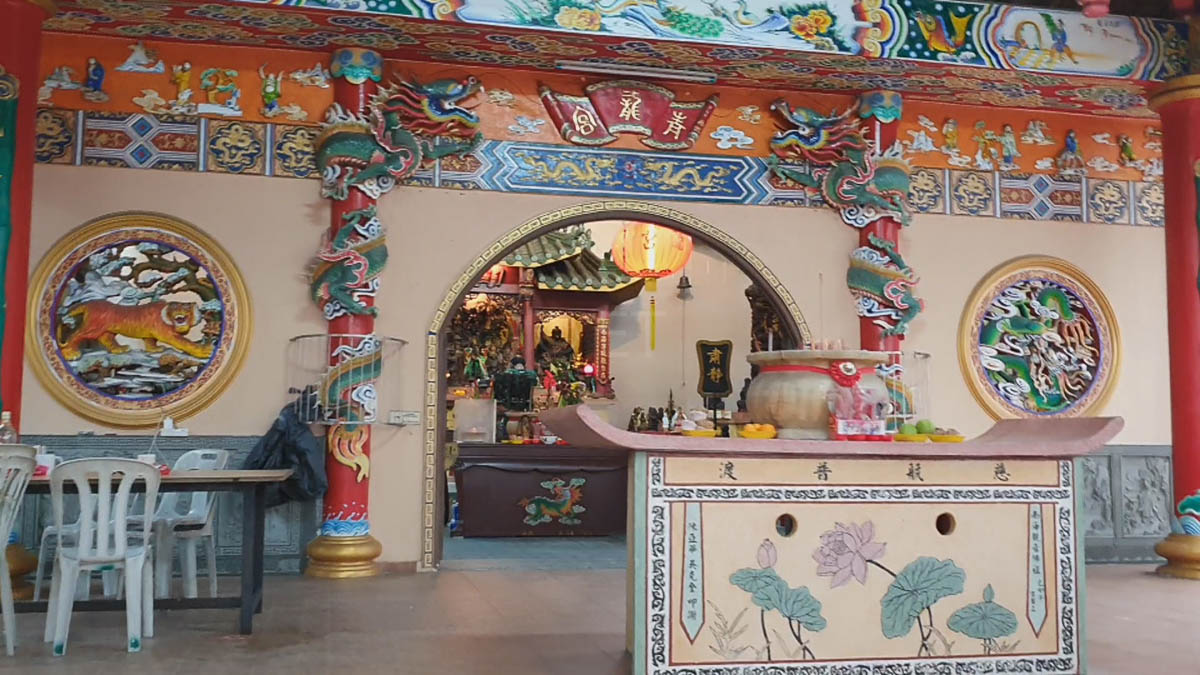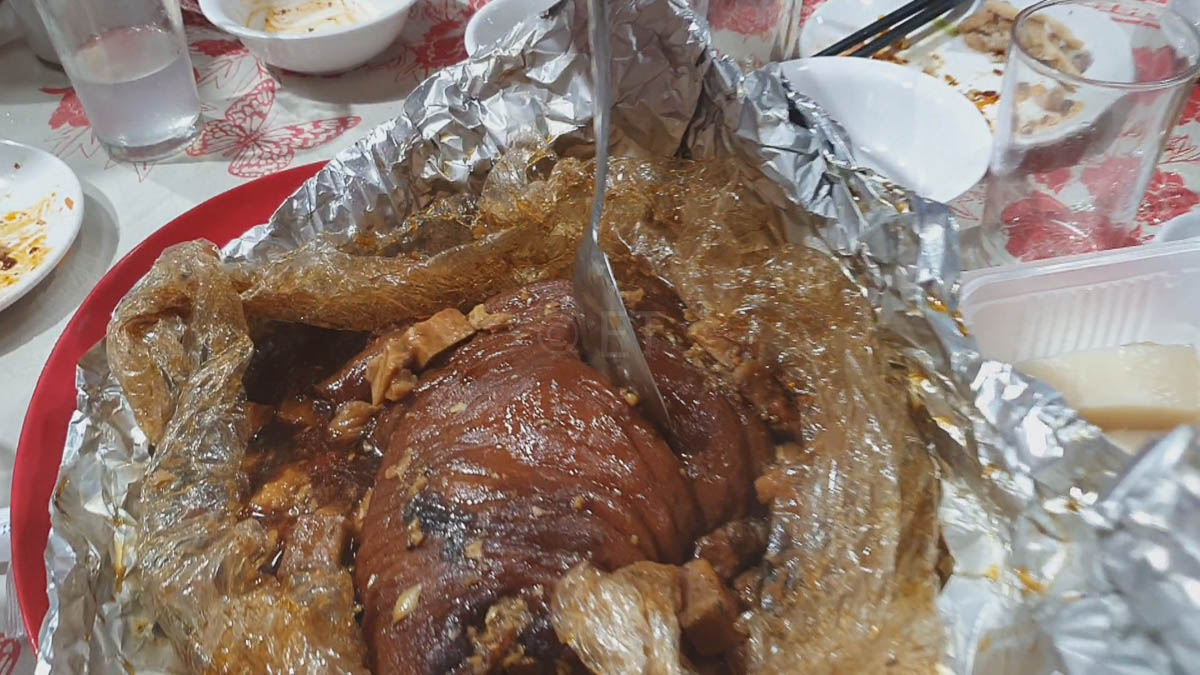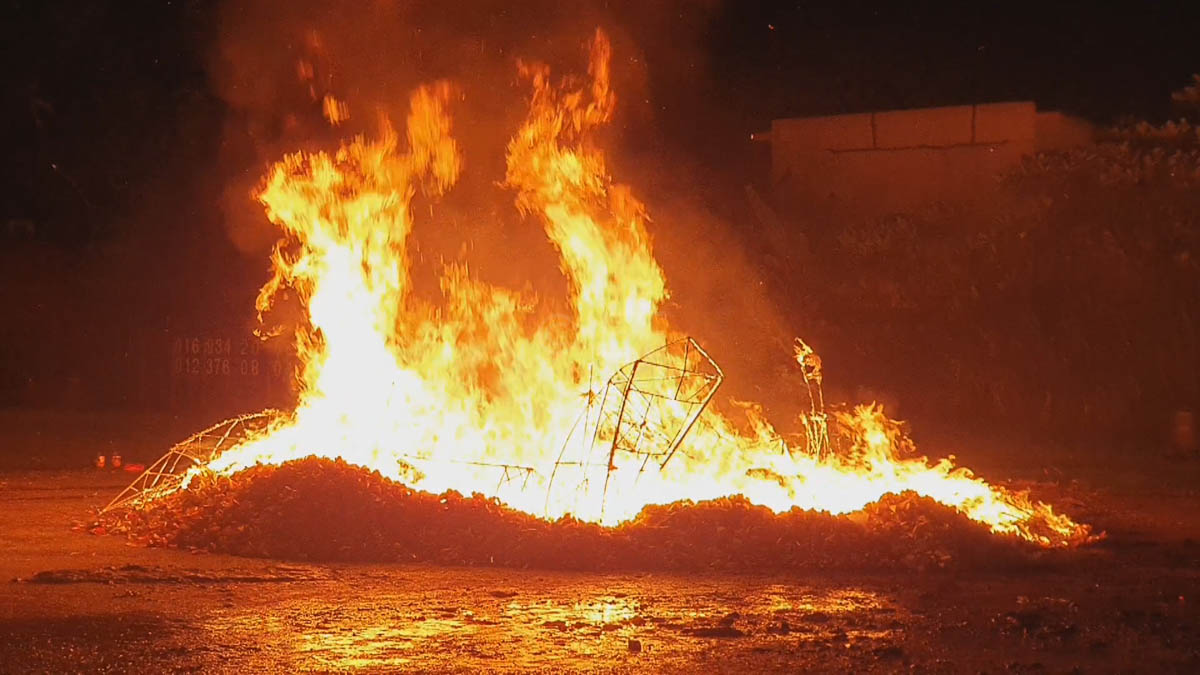Although we at Economy Traveller have attended many Kong Teck ceremonies over the years, we were privileged recently to receive an invitation to attend and record the Kong Teck for a good friend’s mother. We made a copy for the family and with their permission, a slightly different version to share with our viewers. This is Rule Number One, if you are invited to any private function. Remember, if you are a visitor and someone in Malaysia invites you to a family event, it is an honour as such invitations are not lightly given. Make sure you have permission before you share any video or photos of the event. Rule Number Two is to ask, if you’re not sure what to do, what to wear, if you should bring a gift or give a donation, or be invited to participate.

A Malaysian Hokkien Kong Teck
The Kong Teck is a ceremony held as a final ceremony following the passing of a relative. It may be held soon after the funeral, or some years later, three years is common and the ceremony sometimes includes more deceased relatives than the main person being farewelled. This is a Taoist ceremony with some Buddhist elements, particularly favoured by the Hokkien dialect group. Normally lasting three days, the Kong Teck is not nearly as frenetic as a funeral, where the mourners are kept busy for three to five days, almost round the clock. Most of the prayer ceremonies are held in the afternoon and evening and the atmosphere is much more relaxed. The first two days and part of the third, the dress code for the relatives is similar to that during the funeral, black, white, dark blue, but before the dinner everyone changes into cheerful clothes, with bright colours, preferably red.
Note: During a funeral, very traditional families prescribe black for children of the deceased, dark blue for the grandchildren (lighter blue for children of daughters), light green for great grandchildren and because it’s a celebration to live so long, great great grandchildren wear red.
The Dragon House (Leng Chu)
The first think you may notice as you arrive is the Leng Chu, a large ‘house’ up to 2 stories high, entirely constructed from paper and bamboo. It’s actually more like a mansion, but the word house is commonly used. This paper house will be burnt as the culmination of the Kong Teck, as a home for the departed. As pragmatic and sensible people, the family does not neglect to ensure that the house has a ‘title’, so they’ll be secure forever, and there are bags of paper money (‘hell money’) folded into gold nuggets and lotus shapes to burn as well.

There are lots of staff including a lady grinding flour and even a Gurkha or Sikh guard, all made from paper and bamboo. Live guppies swim in a little pond and there are gold and silver mountains in case the money runs short. You can’t miss the in-house Opera performances, with moving figures and there are vehicles, a small car to climb the mountains and a bigger one for elsewhere. They’ve also got sedan chairs in case they need them. The cars and the house share the same number and keen punters will put their money on this at the local betting shop in hopes of a good win.
You’ll also notice that the house is fully lit, the guppy pond has a pump and the opera performers and flour grinder are all animated. They do remove these electrics before the house is consigned heavenwards.
In front of the Leng Chu, a long table is set for the relative and the other deceased family members ‘invited’ to join them. Food is laid out and changed three times daily so they won’t go hungry. You may notice that sometimes, the chopsticks are standing poked into the bowl of rice. This is only ever done for the dead, so if you inadvertently leave your chopsticks like this at a dinner, someone may quietly take them out and place them on the rest beside the bowl.
The dinner
Chinese dinners nowadays are fairly standard, but diners look out for the dishes that only appear at such feasts. One in particular is a large dish of stewed pork knuckle. It’s not pretty, but the taste is ‘out of this world’ It’s served with a plate of a very sticky steamed cake called ‘kee-ah-ker’.

On the evening of this particular dinner, Klang town was hit by a massive storm, with the full flash and bang and flooding experience. Testimony to the tenacity of the diners, who just picked up their tables and chairs and moved further in. Testimony as well to the opera singers who carried on regardless, and the skill of the kitchen staff who, using a temporary kitchen under canvas, produced great food, on time, delivered hot to our tables. Food in Malaysia is almost paramount!

The final goodbye
Fortunately the rain stopped as dinner ended and the ground drained quickly. Then it was time for the final short round of prayers for the family, before the house was dismantled and set up in the open area. The priest offered some more prayers before leading the family member around the house after which they tossed their lighted joss sticks into the pile of paper ‘money’ in front and through the windows. With a minute or two, the Leng Chu was well alight.
As the fire burned, some of the family members called out good messages, including ‘Huat-ah’ meaning ‘prosperity’. The fire burnt brightly and quickly with the flames and smoke rising straight into the air. This is seen as a good omen for future generations.
We thank our friends very much for allowing us to share this experience with our readers. Please enjoy our video and if you’re ever invited to join such and event, now you’ll have an idea what to expect.
We hope to slowly build up our list of stories about such family-type events in Malaysia, that truly show the uniqueness of this wonderful country.








This Post Has 0 Comments